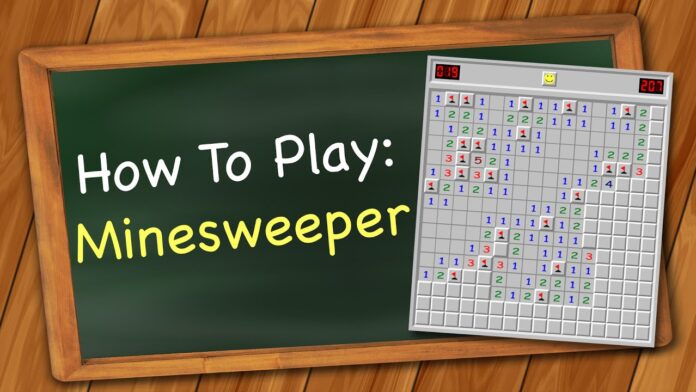Table of Contents
- Introduction
- Understanding the Minesweeper Grid
- Basic Rules of Minesweeper
- Starting a Game
- Identifying Mines
- Using Flags
- Strategic Tips and Tricks
- Common Mistakes to Avoid
- FAQs
- Conclusion
Minesweeper is a classic puzzle game that has entertained people for decades. The game is simple yet challenging, requiring both logic and strategy to master. Whether you’re playing to pass the time or to hone your problem-solving skills, learning how to play Minesweeper can be both fun and rewarding.
This guide will take you through the basics, rules, strategies, and common pitfalls, helping you become a proficient Minesweeper player.
Understanding the Minesweeper Grid
In Minesweeper, players navigate a grid of secret tiles, carefully avoiding those that hide deadly mines. The goal of the game is to clear the board without detonating any mines. The grid’s size and the number of mines can vary depending on the difficulty level you choose. Typically, the beginner level features a 9×9 grid with 10 mines, while intermediate and expert levels have larger grids with more mines.
What Are the Basic Rules of Minesweeper?
The primary objective in Minesweeper is to uncover all the squares that do not contain mines. Selecting a square will lead to one of three different events:
- Empty Square: Reveals a number indicating how many mines are adjacent to it.
- Mine: Ends the game immediately, as you’ve detonated a mine.
- Blank Area: Uncovers a section of the board without any adjacent mines, automatically revealing surrounding squares.
Starting a Game
Starting a game of Minesweeper is simple. Open the game on your device and choose your desired difficulty level. Click on any square to begin. If you click on a mine on your first try, the game will often reset that square to an empty one to give you a fair start. The initial click usually reveals a substantial area of the grid, giving you a starting point for your strategy.
Identifying Mines
As you reveal squares, you’ll notice numbers appearing on some of them. The displayed numbers indicate the number of mines that are immediately adjacent to the square, including those above, below, and to the sides. For example, if a square has the number “3” on it, there are three mines in the eight surrounding squares. Analyze the numbers to figure out where the mines are placed, using reasoning and deduction. This deduction process is crucial for advancing in the game without triggering any mines.
Using Flags
Flags are an essential tool in Minesweeper. They help you mark the squares you suspect contain mines. To place a flag, right-click on the square (or use the designated flagging button on mobile devices). This action helps you keep track of potential mines and avoid accidental clicks on these squares. However, be careful not to place flags indiscriminately, as incorrect flag placement can lead to confusion and mistakes.
Strategic Tips and Tricks
Playing Minesweeper effectively involves more than just clicking randomly. Here are some strategic tips to improve your game:
- Corner and Edge Strategies: Start by focusing on the corners and edges of the grid, as these areas are often easier to clear.
- Use Number Clusters: Analyze clusters of numbers to identify safe squares and potential mine locations.
- Double-Clicking: On some versions of Minesweeper, double-clicking on a number with the correct number of adjacent flags will reveal all adjacent squares. This can speed up the game.
- Pattern Recognition: Learn common patterns, such as 1-2-1 and 1-2-2-1, which can help identify mine locations.
- Risk Assessment: Sometimes, you’ll need to take calculated risks. Weigh the odds before clicking on a potentially dangerous square.
How to Avoid Common Mistakes?
Even experienced players can make mistakes. Be aware of these common mistakes to avoid:
- Misplacing Flags: Incorrectly flagging squares can lead to confusion and errors. Double-check your flags regularly.
- Ignoring Patterns: Failing to recognize common patterns can hinder your progress. Enhance your skills through deliberate practice, focusing on detecting and exploiting these patterns to achieve victory.
- Overlooking Corners: Corners and edges often hold vital clues. Don’t neglect these areas.
- Rushing: Minesweeper requires patience and careful analysis. Exercise patience and careful consideration to prevent hasty decisions and achieve a better outcome.
- Assuming Too Much: Don’t make assumptions without sufficient evidence. Always base your moves on the numbers and logic.
FAQs
- What is the objective of Minesweeper?
The objective is to clear the board by uncovering all non-mine squares without detonating any mines. - How do I use flags in Minesweeper?
Right-click on a square (or use the flagging button on mobile) to place a flag, marking it as a suspected mine. - What do the numbers on the squares mean?
The numbers serve as clues, revealing the count of mines that are directly adjacent to a square, either horizontally, vertically, or diagonally. Use this information to logically deduce the locations of hidden mines and make informed decisions to avoid them. - Can I lose on my first click in Minesweeper?
Most versions of Minesweeper ensure that your first click is always safe, often revealing a large area of the grid. - Is there a strategy for winning Minesweeper?
Yes, using strategies like corner and edge focus, number cluster analysis, and pattern recognition can greatly improve your chances of winning.
Conclusion
Minesweeper is a game of logic, patience, and strategy. By understanding the grid, rules, and using effective strategies, you can enhance your gameplay and enjoy the challenge it offers.
Remember to start slow, use flags wisely, and practice regularly. With time, you’ll become adept at identifying mines and clearing the board efficiently. Enjoy your Minesweeper journey!




